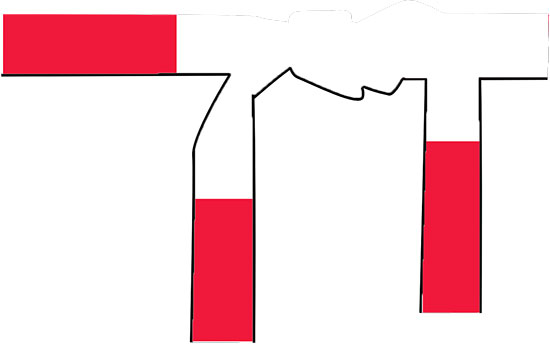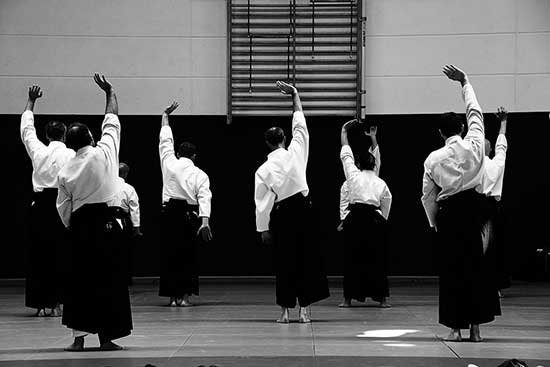You might be surprised to learn that in Taekwondo, the journey to the highest belt represents more than just physical prowess; it encapsulates a lifetime of dedication, both in body and spirit.
As you tie your colored belt before practice, consider the symbolism of the black belt and its degrees—a path that few have tread.
Reaching the coveted 9th Dan, the zenith of this martial art, is a feat that goes beyond the mastery of kicks and punches; it’s a reflection of personal growth, teaching acumen, and a deep understanding of Taekwondo’s philosophy.
The individuals who wear this belt carry stories of perseverance and wisdom that have shaped not just their lives but also the fabric of the discipline itself.
To uncover the layers of commitment and achievement that these belts represent, stay with me as we explore the nuanced hierarchy and the legends who have transcended the mere physical aspects to become Grand Masters of Taekwondo.
Contents
Key Takeaways
- The journey to the black belt in Taekwondo is challenging and requires dedication, discipline, and commitment.
- The black belt signifies the pinnacle of skill and profound comprehension, reflecting mental fortitude and years of experience.
- Advancing through the Dan Black belt ranks reveals deeper expertise and leadership, with each degree reflecting additional years of practice and refinement.
- Grand Masters, who holds the 9th or 10th-degree black belt, have achieved a life dedicated to martial arts and have responsibilities that include leading the community and sharing knowledge.
Understanding Taekwondo Belt Ranks
In Taekwondo, practitioners typically begin with no belt and steadily advance through a series of colored belts, each signifying a deeper level of skill and understanding.
You’ll start with a white belt, symbolizing a blank slate, and progress through yellow, orange, and green, with each belt level introducing more complex techniques and forms.
The belt system is rigorous; belt tests every three months evaluate your mastery of forms, kicks, breaks, and your knowledge of Taekwondo history and terminology.
Before you can even consider testing for the black belt, the highest rank, you must earn a high black-white belt.
The Journey to Black Belt
Embarking on the journey to a black belt in Taekwondo, you’ll face a challenging yet rewarding path that demands dedication, discipline, and a deep commitment to the martial arts’s principles.
Starting from the white belt, each colored belt signifies your progression, reflecting months, if not years to earn. With tests every three months, you’ll demonstrate forms, kicks, breaks, and self-defense techniques, each more demanding than the last.
The pursuit of a black belt isn’t just about rank; it’s about setting long-term goals, relishing the process, and honing both physical and mental fitness.
As you advance, you’ll encounter instructors of varying degrees, each offering unique insights that enrich your understanding of Taekwondo.
Significance of the Black Belt
Attaining a black belt in Taekwondo often signifies that you’ve reached a pinnacle of skill, embodying dedication and a profound comprehension of the martial arts.
As you progress from a novice to achieving your degree black belt, the journey reflects not just physical prowess but also mental fortitude and years of experience.
Degree Black Belt:
- Symbolizes mastery and commitment
- Requires 3-4 years for 1st Dan
Taekwondo Grand Master:
- Attained at 9th Dan after 8-9 years
- Embodies leadership within the community
Responsibilities:
- Imparting knowledge and guidance
- Promoting Taekwondo’s advancement
Earning a black belt is more than a mark of expertise; it’s a testament to your enduring passion and the respect you’ve garnered within the Taekwondo realm.
Degrees of Black Belt Mastery
While a black belt represents a significant milestone, advancing through the degrees of black belt mastery unveils deeper layers of expertise and leadership within Taekwondo. As you climb the Dan Black ranks, each degree reflects additional years of practice, commitment, and refinement of technique.
The zenith, a 9th Dan Black Belt, is achieved after an arduous journey of 8-9 years beyond the first Dan, signifying not just skill but a life dedicated to martial arts.
Reaching the status of a Grand Master or Kwan Jang Nim, typically held by a 9th or 10th-degree black belt, comes with profound responsibilities. You’ll lead the Taekwondo community, own or manage Taekwondo schools, share invaluable knowledge, and champion the art’s growth.
This pinnacle of degrees of black belt mastery is a testament to a lifetime’s pursuit of martial excellence.
Legends of the Highest Belt
The pantheon of Taekwondo Grand Masters includes legendary figures whose unparalleled commitment has shaped the martial art as we know it today. You’re exploring a world where reaching the zenith, the 9th or 10th-degree Black Belt, isn’t just about physical prowess; it’s a lifetime journey spanning decades.
Achieving Grand Master status:
- Requires 30-40 years of dedication to Taekwondo.
- Involves mastering techniques and embodying the philosophy of the Martial Arts.
Responsibilities of a Grand Master:
- Leadership within the Taekwondo community.
- Sharing expertise and mentoring the next generation.
The impact of legends:
- Their legacy transcends their own achievements.
- They influence global Taekwondo standards and practices.
You’re not just earning a Belt; you’re becoming part of a revered lineage.
Conclusion
As you now understand, ascending the Taekwondo ranks isn’t just about skill—it’s a testament to perseverance and spirit. Earning your 9th Dan Black Belt crowns a lifelong journey of mastery and dedication.
Remember, this isn’t an end but a new chapter in leadership and learning. Embrace the philosophy and continue to inspire as a Kwan Jang Nim, a true Grand Master in the art that shapes not just fighters, but leaders.





